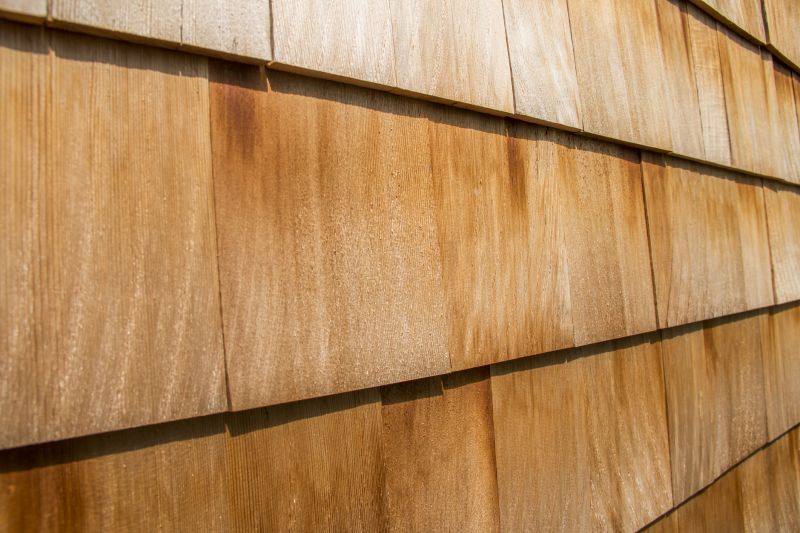Top Products For Siding Replacements To Transform Your Home
Explore the most popular siding options that enhance curb appeal, durability, and value for your home renovation projects.
 Replacing siding on a building or home is a significant project that can enhance the appearance, durability, and protection of the structure. The selection of appropriate products for siding replacement depends on various factors including material compatibility, climate considerations, aesthetic preferences, and budget. Common siding options range from traditional materials like vinyl and wood to more modern choices such as fiber cement and composite panels. Each material offers its own set of advantages and considerations, making it important to evaluate specific needs before making a decision.
Replacing siding on a building or home is a significant project that can enhance the appearance, durability, and protection of the structure. The selection of appropriate products for siding replacement depends on various factors including material compatibility, climate considerations, aesthetic preferences, and budget. Common siding options range from traditional materials like vinyl and wood to more modern choices such as fiber cement and composite panels. Each material offers its own set of advantages and considerations, making it important to evaluate specific needs before making a decision.
Types of Products For Siding Replacements
Vinyl Siding Panels
Affordable and available in numerous colors and styles, vinyl siding panels are a common choice for quick and straightforward installation.
Wood Clapboard
Traditional wood clapboard offers a classic look with natural textures, though it may require regular maintenance.
Fiber Cement Boards
Durable and versatile, fiber cement boards provide a wide range of textures and colors with low maintenance needs.
Aluminum Siding
Lightweight and resistant to rust, aluminum siding is suitable for various climates and offers a sleek appearance.
Engineered Wood Siding
Manufactured to mimic natural wood, engineered wood provides a cost-effective alternative with enhanced durability.
Stucco
A cement-based exterior finish that offers a textured appearance and excellent durability when properly applied.
PVC Siding
Polyvinyl chloride (PVC) siding is lightweight, resistant to moisture, and available in various styles.
Stone Veneer
Stone veneer provides a natural stone look with easier installation and lower weight compared to full stone.
Composite Panel Siding
Composite panels combine different materials for enhanced strength and aesthetic flexibility.
Metal Siding
Metal siding options, including steel and zinc, offer a modern look with high durability and low maintenance.
Popular Choices
Widely used for its affordability and ease of installation, vinyl siding remains a common choice for many residential projects.
Known for its durability and aesthetic versatility, fiber cement siding continues to gain popularity among homeowners.
A traditional option appreciated for its natural appearance, wood clapboard remains a favored siding material.
Metal siding options are increasingly popular for their sleek look and resilience against weather elements.
Offering a cost-effective and durable alternative to natural wood, engineered wood siding is trending among modern homeowners.
Stucco remains a popular choice for its textured finish and long-lasting qualities, especially in warmer climates.
Known for its lightweight and rust-resistant properties, aluminum siding is frequently selected for its low maintenance.
Stone veneer provides a natural stone appearance and is popular for accent walls and facades.
PVC siding offers a durable and weather-resistant option that is gaining favor in various regions.
When undertaking a siding replacement, it’s essential to consider the compatibility of new materials with existing structures, especially in terms of insulation and weather resistance. Proper installation techniques are crucial to ensure longevity and performance. Additionally, selecting the right type of siding can influence maintenance requirements, with some materials needing more frequent upkeep than others. It’s also beneficial to think about the overall style and architectural look of the building to choose siding products that complement its design.
Durability and resistance to elements such as moisture, wind, and temperature fluctuations are key factors in siding material selection. Some products are designed to withstand harsh weather conditions without warping or cracking, while others may require additional protective coatings. Cost is another important aspect, encompassing not only the initial purchase price but also long-term maintenance and replacement costs. Consulting with professionals or researching product specifications can help in making an informed choice that balances performance and affordability.
Key Buying Considerations
- Material durability and resistance to weather elements
- Compatibility with existing structures and insulation needs
- Aesthetic preferences and architectural style
- Maintenance requirements and long-term upkeep
- Installation complexity and professional assistance needed
- Cost of materials and installation, including long-term expenses
- Fire resistance and safety features
- Color options and ability to match existing exterior design
- Availability of warranty or manufacturer support
- Environmental factors such as moisture levels or temperature fluctuations
- Weight and ease of handling during installation
- Compatibility with existing trim, soffits, and other exterior components
- Potential for future expansion or modifications
- Local building codes and regulations
- Resale value implications based on siding choices
This content contains affiliate links. We may earn a commission if you purchase through these links, at no additional cost to you.
